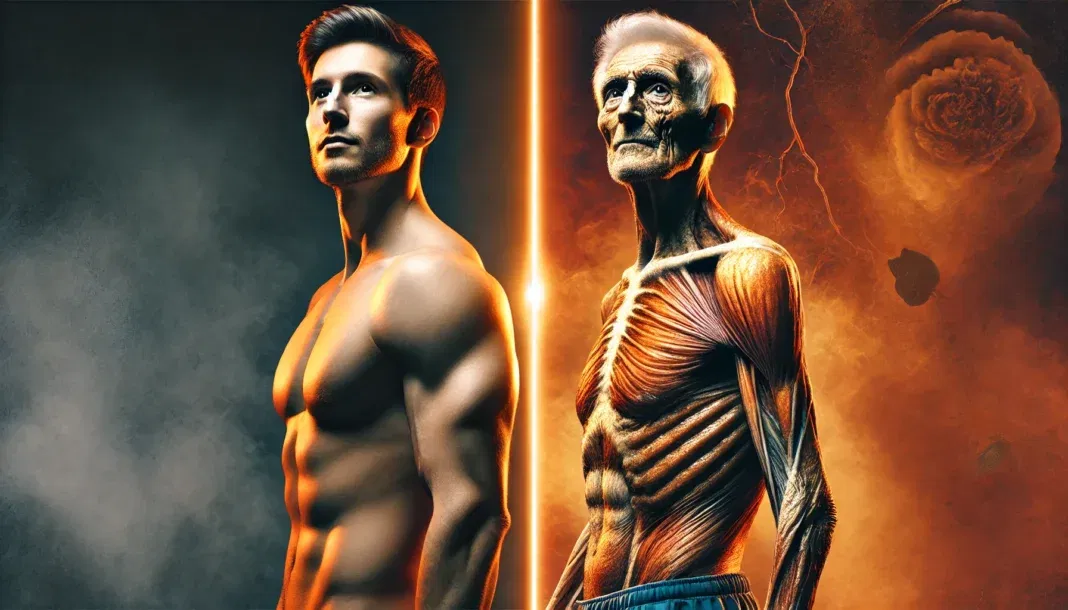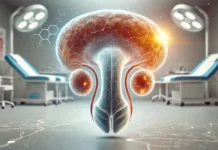Testosterone is a crucial hormone for men’s health, impacting everything from muscle mass and bone density to mood and sexual function. However, not all testosterone in the body is created equal. Understanding the difference between free and total testosterone is essential for assessing hormonal health accurately and determining potential treatment options for those experiencing imbalances. While many focus on total testosterone levels as an overall marker of hormonal health, free testosterone plays a particularly critical role in the body’s biological functions. The distinction between the two can significantly impact health decisions, especially in men dealing with symptoms of low testosterone.
You may also like: How to Get Your Testosterone Levels Checked: Best At-Home and Lab Testing Options
Understanding Total Testosterone: The Big Picture of Hormonal Health
Total testosterone refers to the overall amount of testosterone circulating in the bloodstream. This measure includes testosterone that is bound to proteins such as sex hormone-binding globulin (SHBG) and albumin, as well as free testosterone, which is not bound to any proteins. Bound testosterone, especially when attached to SHBG, is considered inactive because it cannot easily enter cells to exert its effects. Albumin-bound testosterone, while still technically attached to a protein, is loosely bound and can become bioavailable when needed.
Total testosterone levels are often used as an initial diagnostic tool when assessing a man’s hormonal status. However, an optimal total testosterone level does not necessarily mean that a man has sufficient free testosterone. Many men with normal total testosterone levels still experience symptoms of testosterone deficiency due to low free testosterone. This is because SHBG levels can fluctuate based on various factors, including age, obesity, and metabolic disorders, affecting how much testosterone is available for use by the body.
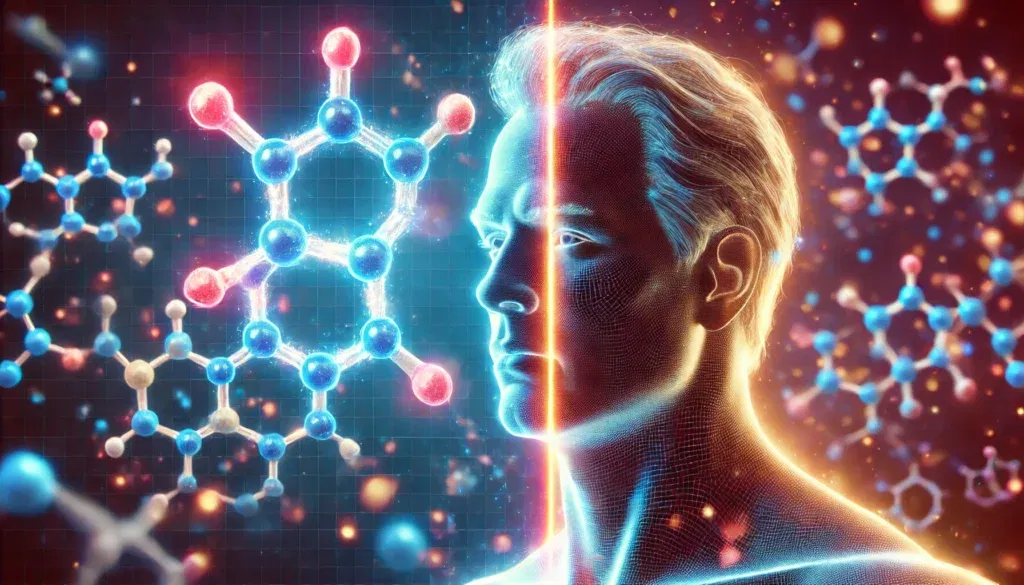
The Role of Free Testosterone in Men’s Health
Free testosterone refers to the small fraction of total testosterone that is unbound and available for direct use by the body’s tissues. Although free testosterone comprises only a small percentage of the total testosterone in the bloodstream, it is the most biologically active form of the hormone. This means it has the most direct impact on functions such as libido, muscle growth, fat metabolism, cognitive health, and overall vitality.
Because free testosterone is responsible for many of the key benefits associated with testosterone, men with low free testosterone often experience symptoms such as reduced sexual function, difficulty building muscle, increased body fat, and low energy levels—even if their total testosterone levels appear normal. Measuring free testosterone provides a more accurate picture of a man’s hormonal health, as it reflects the amount of testosterone that is readily available for physiological functions.
How Free and Total Testosterone Levels Change With Age
Testosterone levels naturally decline as men age, but the rate at which free testosterone declines is often more pronounced. This is largely due to the increase in SHBG levels that occurs with aging, which binds more testosterone and reduces the amount that remains free and bioavailable.
For example, a man in his 20s may have a total testosterone level of 700 ng/dL with a free testosterone level of 15 ng/dL. By the time he reaches his 50s, his total testosterone may have only declined to 600 ng/dL, but his free testosterone may have dropped to 7 ng/dL due to increased SHBG levels. This shift can lead to noticeable symptoms, even when total testosterone appears relatively stable.
Understanding these changes can help men take proactive steps in maintaining optimal hormonal health. Lifestyle modifications, targeted supplementation, and in some cases, testosterone replacement therapy (TRT) can help address declines in free testosterone and mitigate associated symptoms.
Low Free Testosterone: Symptoms and Health Consequences
Low free testosterone can have a profound impact on a man’s health and quality of life. Some of the most common symptoms include:
- Reduced libido and erectile dysfunction
- Loss of muscle mass and increased fat accumulation
- Fatigue and decreased energy levels
- Mood disturbances, including depression and irritability
- Difficulty concentrating and memory problems
- Decreased bone density, increasing the risk of fractures
In addition to these symptoms, long-term low free testosterone levels have been linked to an increased risk of cardiovascular disease, metabolic syndrome, and type 2 diabetes. This makes it essential for men to monitor their hormonal health and take necessary steps to optimize free testosterone levels.
How to Measure and Interpret Free Testosterone Levels
Free testosterone levels are typically measured using either direct testing or calculated methods. Direct free testosterone testing measures the actual amount of unbound testosterone in the blood, whereas calculated free testosterone estimates the level based on total testosterone, SHBG, and albumin levels.
A healthy free testosterone range varies depending on the laboratory and testing method used, but it typically falls between 4.5-25 ng/dL. However, individual symptoms and overall health status should always be taken into account when interpreting results. A man with free testosterone levels on the lower end of the range may still experience symptoms and require treatment or lifestyle adjustments.
Natural Strategies for Optimizing Free Testosterone
There are several natural ways to support and optimize free testosterone levels:
- Strength Training and Physical Activity – Resistance training and high-intensity interval training (HIIT) have been shown to boost testosterone production and reduce SHBG levels, increasing free testosterone availability.
- Nutrient Optimization – Consuming adequate amounts of key nutrients such as zinc, magnesium, vitamin D, and healthy fats supports testosterone production and helps maintain hormonal balance.
- Reducing Stress and Improving Sleep – Chronic stress and poor sleep quality increase cortisol levels, which can suppress testosterone production. Prioritizing relaxation techniques and getting at least 7-9 hours of quality sleep each night can improve free testosterone levels.
- Maintaining a Healthy Weight – Obesity is associated with increased SHBG levels and higher estrogen conversion, both of which reduce free testosterone. Losing excess weight through a balanced diet and regular exercise can improve hormonal balance.
- Avoiding Endocrine Disruptors – Chemicals found in plastics, pesticides, and personal care products can interfere with hormone production and metabolism. Limiting exposure to these toxins can support overall hormonal health.
Medical Treatment Options for Low Free Testosterone
For men with persistently low free testosterone and significant symptoms, medical interventions may be necessary. Testosterone replacement therapy (TRT) is a common treatment that helps restore hormonal balance. However, TRT should only be considered under medical supervision, as improper use can lead to side effects such as infertility, cardiovascular risks, and prostate issues.
Clomiphene citrate and human chorionic gonadotropin (hCG) are alternative treatments that can stimulate the body’s natural testosterone production without suppressing fertility. These options may be particularly beneficial for men who wish to maintain their reproductive health while addressing low free testosterone levels.
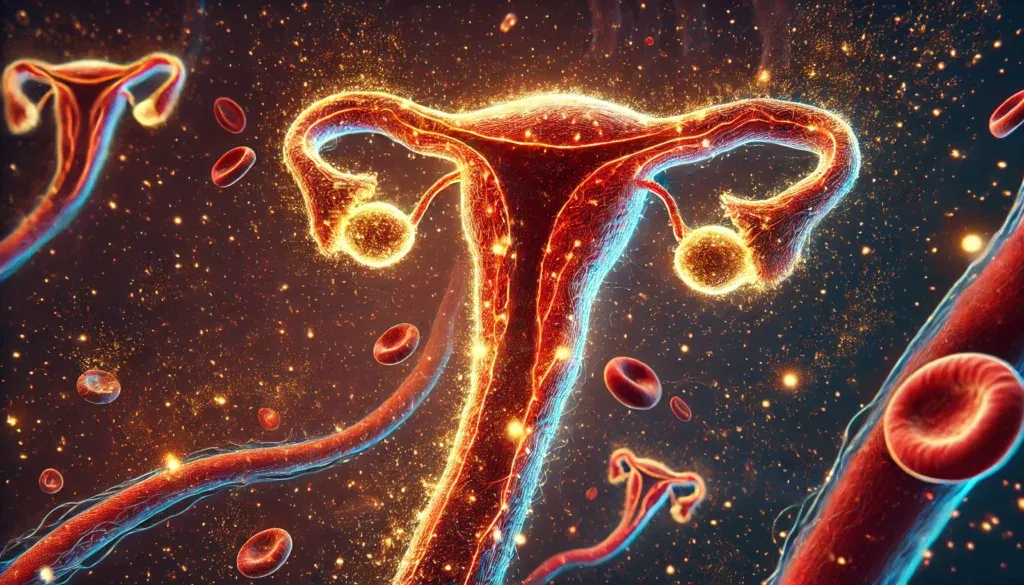
Frequently Asked Questions (FAQ) on Free and Total Testosterone
1. What is the difference between free testosterone and total testosterone?
The difference between free testosterone and total testosterone lies in how the hormone is bound in the body. Total testosterone includes all forms of the hormone present in the bloodstream, including bound and free testosterone. Free testosterone, however, is unbound and readily available for biological activity. The body requires a proper free testosterone range to maintain muscle mass, libido, and cognitive function. Understanding the total versus free testosterone balance is essential for diagnosing hormonal imbalances.
2. Why is my free testosterone low?
Several factors can contribute to low free testosterone levels, including aging, obesity, chronic stress, and certain medical conditions like hypogonadism. Low free testosterone may also result from elevated levels of sex hormone-binding globulin (SHBG), which binds to testosterone and reduces the amount available for biological processes. Low bioavailable testosterone can lead to symptoms such as fatigue, low libido, and difficulty building muscle. If you suspect a hormonal imbalance, checking both free testosterone and total testosterone levels is essential. Lifestyle changes, medical treatments, and dietary modifications can help restore optimal levels.
3. What does free testosterone do in the body?
Free testosterone plays a crucial role in muscle growth, energy levels, and overall well-being. Unlike bound testosterone, free testosterone is immediately available for biological functions, influencing metabolism, libido, and cognitive performance. In men, optimal free testosterone levels help maintain muscle strength, while in women, free testosterone levels in females contribute to bone health and mood stability. A deficiency in free testosterone can result in mood swings, reduced motivation, and diminished physical performance. Measuring free testosterone direct levels can provide a clearer picture of overall hormonal health.
4. How do free testosterone levels differ between men and women?
Free testosterone levels in females are significantly lower than in males, but they are still essential for energy, muscle function, and sexual health. While men rely on higher free testosterone percentages for muscle mass and strength, women require balanced levels to support mood and metabolic function. Free testosterone women need should remain within a certain range to prevent symptoms such as fatigue, low libido, and weakened bone density. In both men and women, free testosterone direct measurements help assess potential hormonal imbalances. Analyzing free testosterone vs testosterone serum levels can guide appropriate treatment strategies.
5. What does low free testosterone mean for overall health?
Low free testosterone can negatively affect physical and mental health, leading to issues such as depression, low energy, and reduced muscle mass. A free testosterone low level can also contribute to weight gain and cardiovascular concerns. In some cases, individuals with low total testosterone normal free testosterone levels may still experience symptoms, indicating the need for further evaluation. Understanding the impact of low free testosterone and free vs bioavailable testosterone can help identify the best course of action. Addressing underlying health issues and considering hormone therapy can improve symptoms.
6. How is free testosterone measured?
Free testosterone can be measured using various methods, including free testosterone direct tests and calculated (calc free testosterone) approaches. The free testosterone direct test measures the unbound portion of the hormone in the bloodstream, while calc free testosterone is estimated based on total testosterone, SHBG, and albumin levels. Each method provides valuable insights into testosterone bioavailability and potential deficiencies. Comparing free testosterone direct female and male levels can help determine whether hormonal intervention is necessary. Proper testing ensures accurate diagnosis and treatment.
7. Is free testosterone important for muscle growth?
Yes, free testosterone is crucial for muscle growth and strength, particularly in men. The bound vs free testosterone effect on sex and physical performance is significant, with free testosterone directly influencing muscle protein synthesis. Low free testosterone normal total levels may still lead to muscle loss and decreased endurance. For athletes and bodybuilders, optimizing free testosterone levels ensures better recovery and performance. Understanding the difference between free and total testosterone can help tailor fitness and dietary strategies.
8. Can you have low free testosterone but normal total testosterone?
Yes, low free testosterone normal total testosterone levels can occur due to high SHBG levels, which reduce the amount of unbound testosterone available for biological functions. This condition can cause symptoms similar to low testosterone and free testosterone deficiencies, such as fatigue, brain fog, and reduced libido. Monitoring both free testosterone percentage and total testosterone helps assess the true hormonal status. Treatments may include lifestyle changes, supplements, or medical interventions to balance hormone levels. Free direct testosterone levels provide critical insight into the body’s available testosterone.
9. How does free testosterone affect sexual health?
Free testosterone plays a major role in sexual function, libido, and overall reproductive health. The bound vs free testosterone effect on sex is evident in both men and women, with unbound testosterone directly influencing desire and performance. Low bioavailable testosterone may contribute to erectile dysfunction, reduced arousal, and difficulty achieving orgasm. Free testosterone vs testosterone serum levels can provide clues about potential hormonal imbalances affecting sexual well-being. Addressing free testosterone direct low levels through therapy or lifestyle modifications can enhance sexual health and satisfaction.
10. How can I improve my free testosterone levels naturally?
Improving free testosterone levels naturally involves lifestyle adjustments such as strength training, maintaining a healthy diet, and managing stress. Consuming nutrient-rich foods that support hormone production, such as healthy fats and zinc-rich foods, can help. Reducing alcohol intake and ensuring quality sleep also play a role in optimizing free testosterone levels. Addressing factors contributing to low free testosterone, such as obesity and chronic stress, is essential. Regular monitoring of free testosterone direct and bioavailable testosterone vs free testosterone levels can guide personalized strategies for improvement.
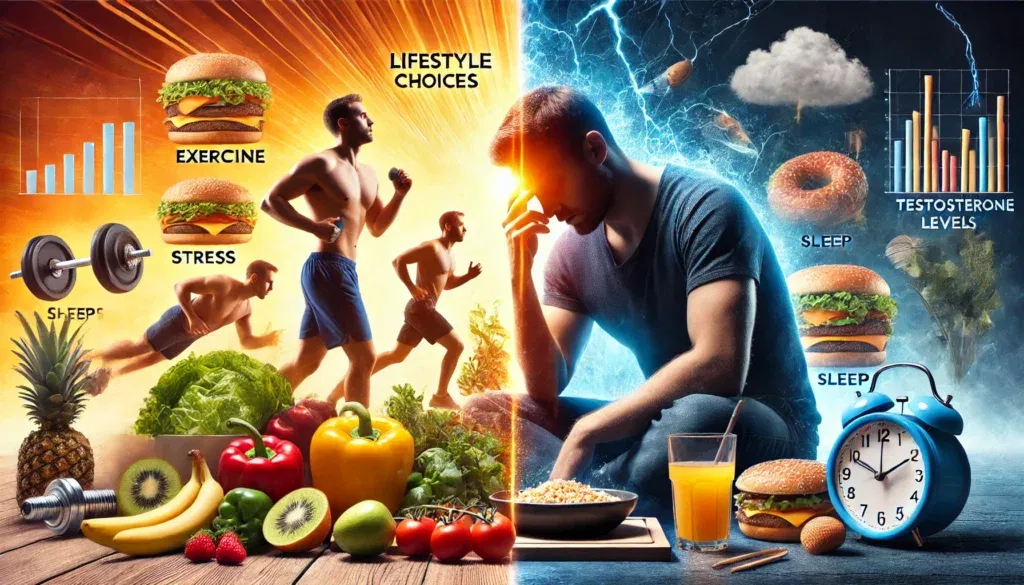
Conclusion: Why Free Testosterone Matters for Men’s Health and Longevity
Understanding the difference between free and total testosterone is crucial for assessing and optimizing hormonal health. While total testosterone provides a broad overview of testosterone levels, free testosterone is the key determinant of the hormone’s biological effects. Men with low free testosterone, even if their total testosterone is within a normal range, may experience significant health issues affecting their quality of life and longevity.
By implementing lifestyle changes, monitoring hormonal levels, and seeking appropriate medical interventions when necessary, men can maintain optimal testosterone levels and enjoy better overall health. As research continues to evolve, the importance of free testosterone in men’s health is becoming increasingly clear, making it an essential factor to consider in any discussion of hormonal wellness and aging.
testosterone optimization, men’s hormone health, testosterone therapy, SHBG and testosterone, natural testosterone boosters, low T symptoms, free testosterone testing, aging and testosterone, bioavailable testosterone, testosterone replacement options, hormone balance in men, lifestyle for high testosterone, exercise and testosterone, nutrition for testosterone, sleep and testosterone levels, stress and hormone health, endocrine disruptors and testosterone, TRT alternatives, free testosterone importance, male longevity and hormones
Further Reading:
What’s the difference between total and free testosterone?
Testosterone for the aging male; current evidence and recommended practice
Understanding total testosterone vs. free testosterone
Disclaimer: The information provided in this article is for general informational purposes only. The content does not constitute professional advice of any kind, including but not limited to medical, legal, or financial advice. HisHealthMag and its contributors make no representations or warranties regarding the accuracy, completeness, or reliability of the information presented. Always seek the advice of a qualified professional for any specific concerns or questions you may have. Neither HisHealthMag nor its authors assume any responsibility or liability for any actions taken based on the information provided in this article. The views and opinions expressed are those of the author(s) and do not necessarily reflect the official policy or position of HisHealthMag.


